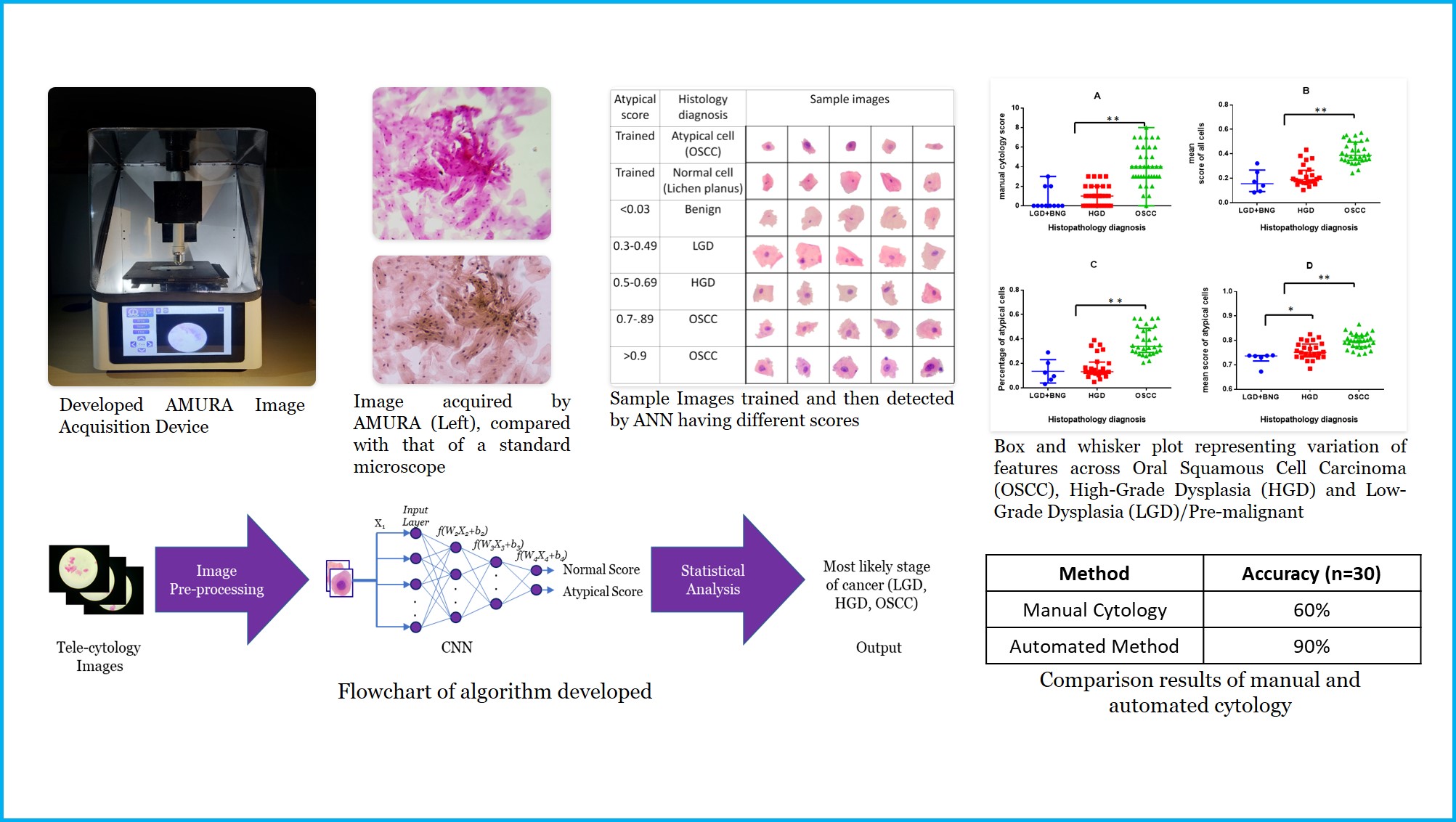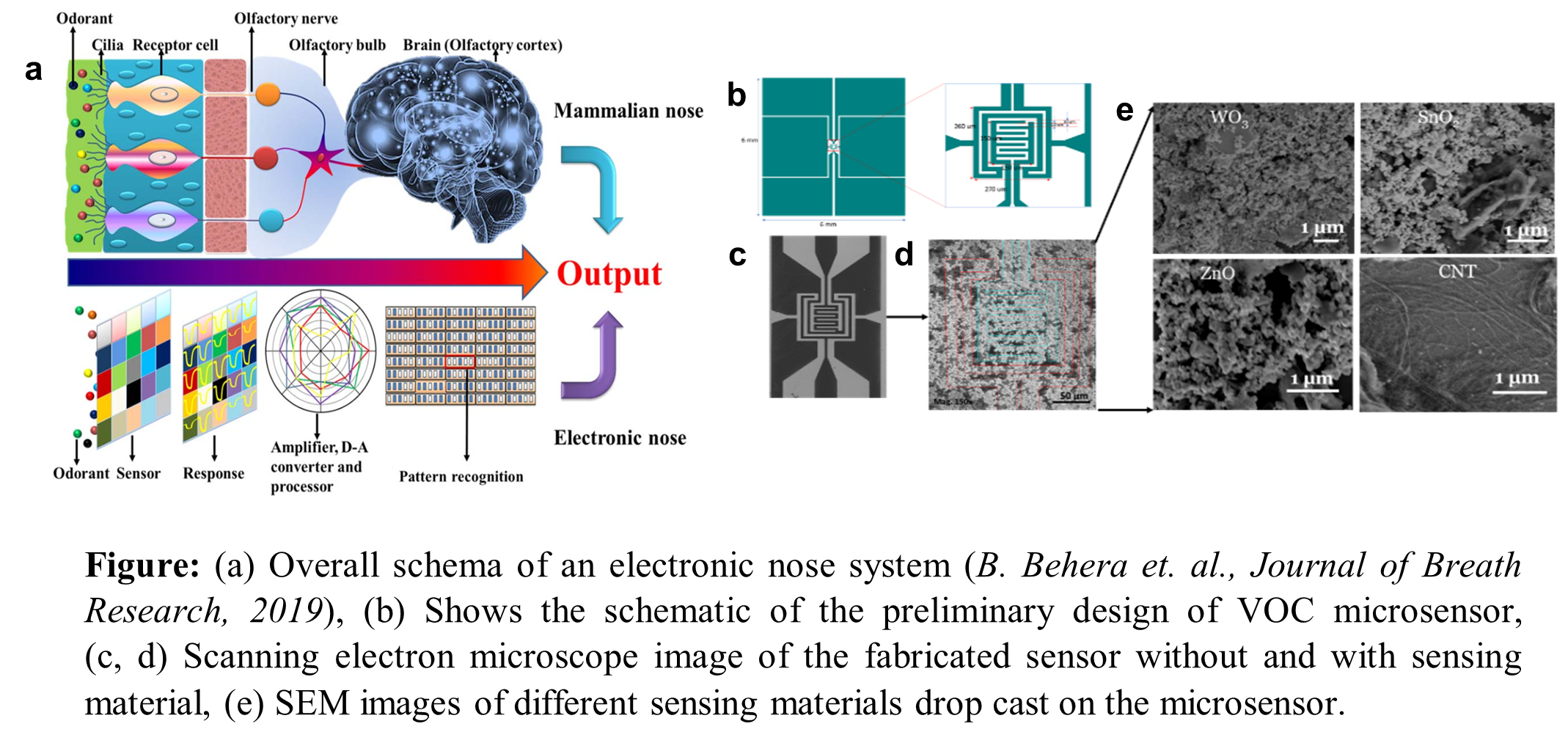Advanced Morphology Unit for Realtime Analysis (AMURA)
Problem Statement:
In the Indian scenario, most of the population lives in the rural than the urban areas, hence most people have access to Primary Healthcare Centres (PHCs) only. The PHCs with restricted resources (Microscopes and Scanners) and expertise (Trained pathologists), cannot perform screening for early detection of cancer. Although the patients get referred to a tertiary hospital for incision biopsy, patient trauma caused, and expenditure incurred is high. Cytology being non-invasive, affordable, and accessible will be thus more favourable as an oral cancer screening tool.
Concept:
Manual cytopathology diagnosis is less accurate and is not used for screening especially for early detection. Our aim with AMURA was to automate the analysis of the H&E stained cytology slides, to develop a more accurate screening method. The system we developed was able to achieve 90% overall accuracy. We achieved a substantial increase in the sensitivity of low stages of cancer (from 25% to 73%) when compared to manual cytology. To further increase the sensitivity in lower grades of cancer, we are currently working with our clinical collaborators to develop a system that enables molecular cytology at point of care. The system developed would be able to do fluorescence imaging by utilizing devices acquired with a fraction of the cost of normal automated fluorescence imaging devices.
Technology/Science involved:
Mechatronic systems, Cytology, Oncology, Point-of-Care tools, Machine learning, Image processing
Smart Wearable for Real-time Temperature Monitoring, SpO2 measurement, and Location Tracking for SARS-CoV-2 Asymptomatic Patient
Problem Statement:
In the existing diagnostic scenario for COVID-19 viral diseases the suspected patient must visit a designated test facility or laboratory to perform viral diagnosis tests that are usually based on antigen detection (antibody-based tests) or nucleic acid amplification (RT-PCR). In the current scenario of the disease spreading in the community, there are only limited tests that are available, and it is most often used only for patients who are symptomatic. Thus, asymptomatic patients as well as primary and secondary contacts of confirmed cases are not tested but advised to follow home isolation. There is no option to monitor their symptoms and to monitor if they are following quarantine as per rules.
Concept:
Recent reports have revealed reduced levels of blood oxygen saturation in patients suffering from COVID-19. This is observed even in patients who are asymptomatic, a condition known as “silent hypoxia”. Elevated body temperature and decreasing blood oxygen saturation are thus key early indicators of a potential infection. The GPS location can be updated through Mobile Application which is connected to the wearable through Bluetooth.
Technology/Science involved:
Non-invasive diagnosis and monitoring, Photoplethysmogram signal analysis, Temperature Sensing, GPS
Patent Application number:
A Non-invasive Approach for Screening Patients with Liver Cirrhosis for Minimal Hepatic Encephalopathy Using an Electronic Nose Platform
Problem Statement:
Cirrhosis, non-alcoholic fatty liver disease (NAFLD), viral hepatitis, and other disorders related to the liver can raise a person’s risk of developing liver cancer. Early liver disease screening involves identifying people with disorders like cirrhosis. The liver disease burden in India is enormous, with 22.2 deaths per 100,000 population attributed to cirrhosis (as per Global Health Observatory data from World Health Organisation). It is found that early detection and management of these disorders can result in a better prognosis. Despite significant technological advances, screening has remained unchanged for decades, e.g., biopsy, which remains the gold standard procedure even now. This procedure is invasive and painful. Thus, non-invasive, painless disease screening methods are the need of the hour. The research problem attempts to develop a portable Electronic Nose platform for screening patients with Liver Cirrhosis for Minimal Hepatic Encephalopathy.
Concept:
Technology/Science involved:
Non-Invasive Disease Screening, Breath Signature, Colorimetric Sensors, Electronic system Design, MEMS-Based Sensors, Machine Learning.



